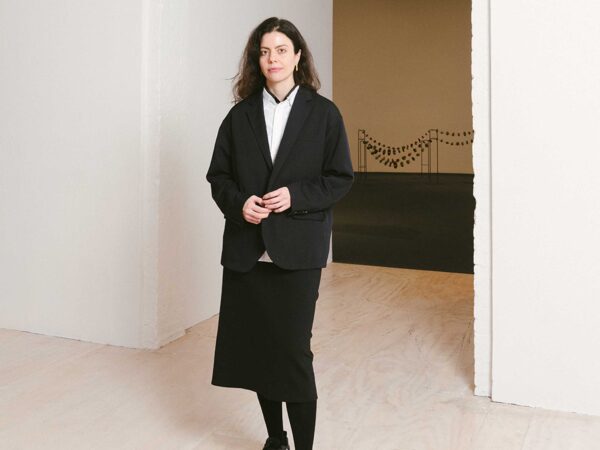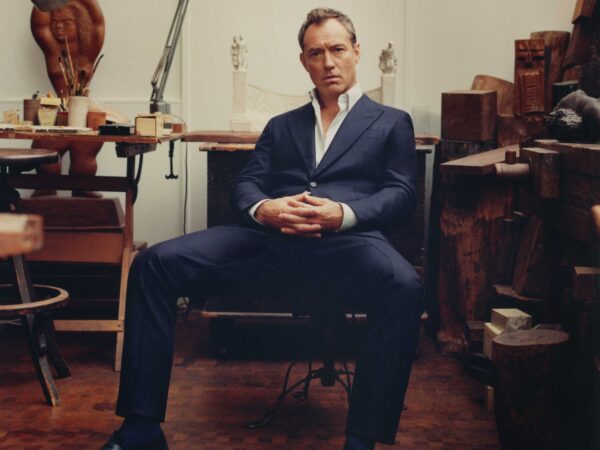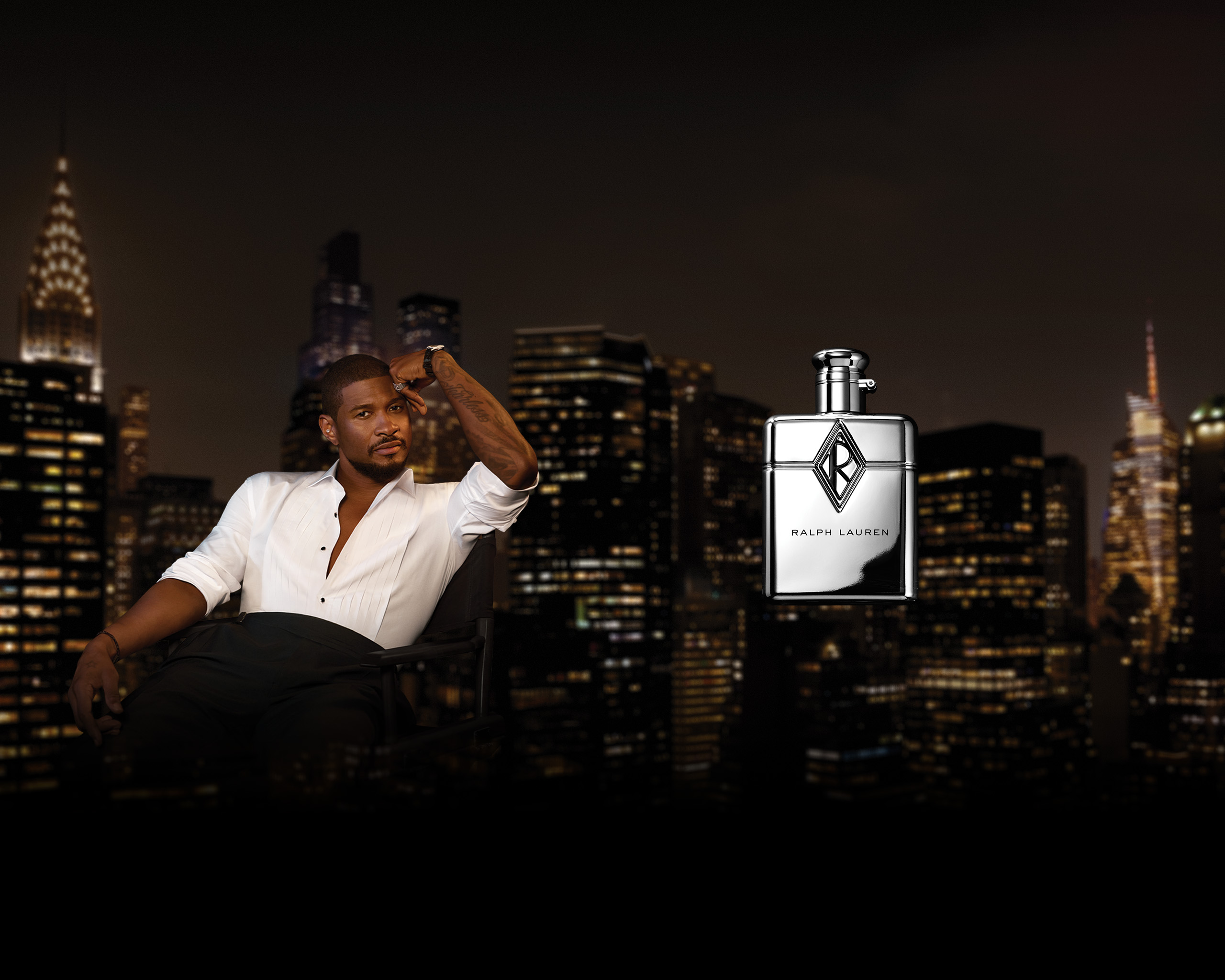The artists discuss communal responsibility and imagine Black futures through their work and experience.
If you have walked around New York City there is a good chance you spotted the work of Gianni Lee and Elise Peterson. Gianni is an artist hailing from West Philadelphia, who began exploring visual art as a means of defining himself during a trying time. He has collaborated with a number of brands, including Nike and Fendi. Inspired by musical artists Tyler, the Creator, A$AP Rocky, Frank Ocean, and others, Gianni joins a cohort of “Black men in the industry being themselves 100%.” Elise Peterson is a tour de force from Washington, D.C. Dabbling in many varying artistic forms and expressions, Elise is multi-hyphenate; she’s an artist, illustrator, media host, storyteller, mother, the list goes on. Her work has been on display throughout the streets of New York, she has two children’s books under her belt, and mosaics to come.
Gianni presented Document with the idea of doing a portrait of Elise during their conversation. Document had the privilege of sitting with Gianni and Elise to hear them speak about their artistic journeys, creating Black work, and brainstorming the future through their crafts.
Above The Fold

Sam Contis Studies Male Seclusion

Slava Mogutin: “I Transgress, Therefore I Am”

The Present Past: Backstage New York Fashion Week Men’s Spring/Summer 2018

Pierre Bergé Has Died At 86

Falls the Shadow: Maria Grazia Chiuri Designs for Works & Process

An Olfactory Memory Inspires Jason Wu’s First Fragrance

Brave New Wonders: A Preview of the Inaugural Edition of “Close”

Georgia Hilmer’s Fashion Month, Part One

Modelogue: Georgia Hilmer’s Fashion Month, Part Two

Surf League by Thom Browne

Nick Hornby: Grand Narratives and Little Anecdotes

The New Helmut

Designer Turned Artist Jean-Charles de Castelbajac is the Pope of Pop

Splendid Reverie: Backstage Paris Haute Couture Fall/Winter 2017

Tom Burr Cultivates Space at Marcel Breuer’s Pirelli Tire Building

Ludovic de Saint Sernin Debuts Eponymous Collection in Paris

Peaceful Sedition: Backstage Paris Fashion Week Men’s Spring/Summer 2018
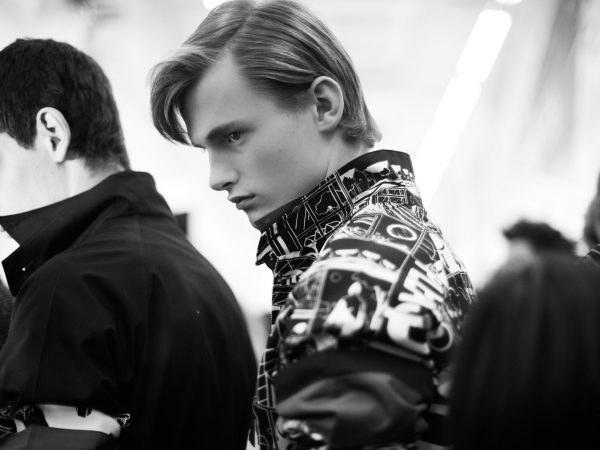
Ephemeral Relief: Backstage Milan Fashion Week Men’s Spring/Summer 2018

Olivier Saillard Challenges the Concept of a Museum

“Not Yours”: A New Film by Document and Diane Russo

Introducing: Kozaburo, 2017 LVMH Prize Finalist

Introducing: Marine Serre, 2017 LVMH Prize Finalist

Conscious Skin

Escapism Revived: Backstage London Fashion Week Men’s Spring/Summer 2018

Introducing: Cecilie Bahnsen, 2017 LVMH Prize Finalist

Introducing: Ambush, 2017 LVMH Prize Finalist

New Artifacts

Introducing: Nabil Nayal, 2017 LVMH Prize Finalist

Bringing the House Down

Introducing: Molly Goddard, 2017 LVMH Prize Finalist

Introducing: Atlein, 2017 LVMH Prize Finalist

Introducing: Jahnkoy, 2017 LVMH Prize Finalist

LVMH’s Final Eight

Escaping Reality: A Tour Through the 57th Venice Biennale with Patrik Ervell

Adorned and Subverted: Backstage MB Fashion Week Tbilisi Autumn/Winter 2017

The Geometry of Sound

Klaus Biesenbach Uncovers Papo Colo’s Artistic Legacy in Puerto Rico’s Rainforest

Westward Bound: Backstage Dior Resort 2018

Artist Francesco Vezzoli Uncovers the Radical Images of Lisetta Carmi with MoMA’s Roxana Marcoci

A Weekend in Berlin

Centered Rhyme by Elaine Lustig Cohen and Hermès

How to Proceed: “fashion after Fashion”

Robin Broadbent’s Inanimate Portraits

“Speak Easy”

Revelations of Truth

Re-Realizing the American Dream

Tomihiro Kono’s Hair Sculpting Process

The Art of Craft in the 21st Century

Strength and Rebellion: Backstage Seoul Fashion Week Autumn/Winter 2017

Decorative Growth

The Faces of London

Document Turns Five
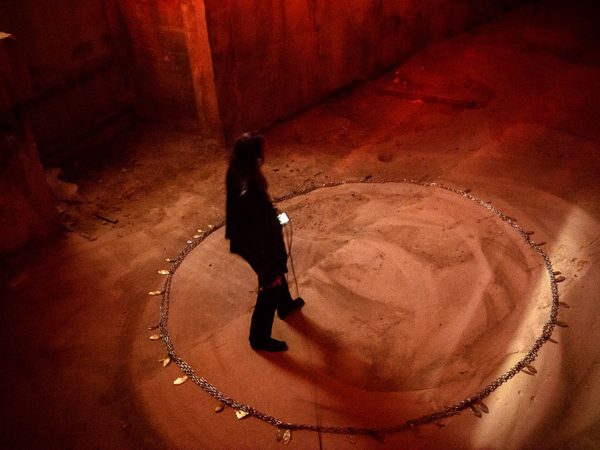
Synthesized Chaos: “Scholomance” by Nico Vascellari

A Whole New World for Janette Beckman

New Ceremony: Backstage Paris Fashion Week Autumn/Winter 2017
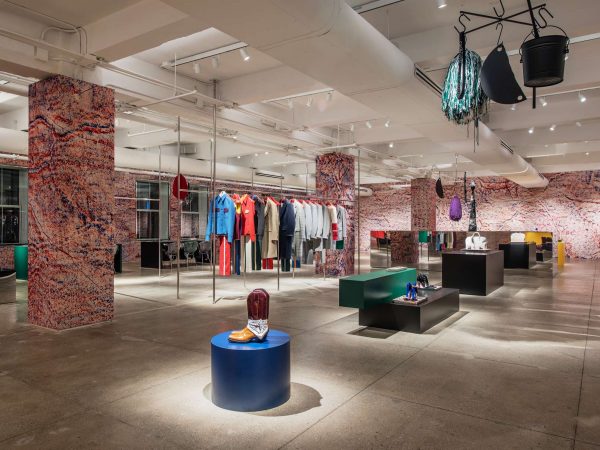
New Perspectives on an American Classic

Realized Attraction: Backstage Milan Fashion Week Autumn/Winter 2017

Dematerialization: “Escape Attempts” at Shulamit Nazarian

“XOXO” by Jesse Mockrin

Brilliant Light: Backstage London Fashion Week Autumn/Winter 2017

The Form Challenged: Backstage New York Fashion Week Autumn/Winter 2017

Art for Tomorrow: Istanbul’74 Crafts Postcards for Project Lift

Inspiration & Progress

Paskal’s Theory of Design

On the Road

In Taiwan, American Designer Daniel DuGoff Finds Revelation

The Kit To Fixing Fashion

The Game Has Changed: Backstage New York Fashion Week Men’s Autumn/Winter 2017

Class is in Session: Andres Serrano at The School

Forma Originale: Burberry Previews February 2017

“Theoria”

Wearing Wanderlust: Waris Ahluwalia x The Kooples

Approaching Splendor: Backstage Paris Haute Couture Spring/Summer 2017

In Florence, History Returns Onstage

An Island Aesthetic: Loewe Travels to Ibiza

Wilfried Lantoine Takes His Collection to the Dancefloor

A Return To Form: Backstage New York Fashion Week Spring/Summer 2018

20 Years of Jeremy Scott

Offline in Cuba

Distortion of the Everyday at Faustine Steinmetz

Archetypes Redefined: Backstage London Fashion Week Spring/Summer 2018

Spring/Summer 2018 Through the Lens of Designer Erdem Moralıoğlu

A Week of Icons: Backstage Milan Fashion Week Spring/Summer 2018

Toasting the New Edition of Document

Embodying Rick Owens

Prada Channels the Wonder Women Illustrators of the 1940s
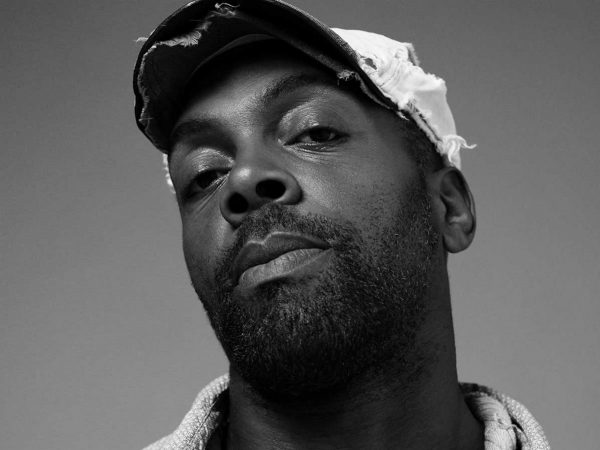
Andre Walker’s Collection 30 Years in the Making

Fallen From Grace, An Exclusive Look at Item Idem’s “NUII”

Breaking the System: Backstage Paris Fashion Week Men’s Autumn/Winter 2017

A Modern Manufactory at Mykita Studio

A Wanted Gleam: Backstage Milan Fashion Week Men’s Autumn/Winter 2017

Fashion’s Next, Cottweiler and Gabriela Hearst Take International Woolmark Prize

Beauty in Disorder: Backstage London Fashion Week Men’s Autumn/Winter 2017

“Dior by Mats Gustafson”

Prada’s Power

George Michael’s Epochal Supermodel Lip Sync

The Search for the Spirit of Miss General Idea

A Trace of the Real

Wear and Sniff

Underwater, Doug Aitken Returns to the Real
Elise Peterson—I want to talk about representation. You had said something like you didn’t know you could do what you were doing until you saw people who looked like you who were doing things that you were interested in. I know for me, until much, much more recently, I didn’t think that I was an artist. It felt like a fluke.
Gianni Lee—A fluke?
Elise—Yeah, I don’t know. The collage series, I wish I could almost erase it. I’m really proud that it happened. I just don’t think it’s honest and reflective of who I am now.
Gianni—That’s to you though.
Elise—I just know that I’m capable of so much more and I feel those are a much better representation of who I am and where I’m from.
Gianni—I feel like that all the time.
Elise—Yeah?
Gianni—I mean, I’ll like my work and then I’m like yo I can do better. I always look at my process, I just want to make sure I have time to make sure I do what I really wanna do.
Elise—Part of what allowed me to think (of myself as an artist)…was when I discovered Faith Ringgold. She illustrates children’s books, she makes paintings and fine art you can see in MoMa, but she also quilts. She’s multi-hyphenate. I think she embodies what it means to be free, and also she makes work that is obviously very Black. Sometimes I feel at this crossroads of being a Black artist and work being Black work and what is Black work, and what is our responsibility to make work for our community, make work that’s honest? I told you I’m doing some mosaic sculptures, and I was like, I just want to make mosaic hamburgers. You know? I just want to do silly shit!
Gianni—People like stuff like that.
Elise—Right, but then it’s also the fact of like, how am I using my platform? Can I be a Black artist and make mosaic hamburgers? [laughs] Is that okay?
Gianni—Okay so I wanted to ask you this for a long time… the art world is already kind of iffy and weird, and I asked myself why I’ve never really seen you collaborate with any men. So I just wanna know what you think about that or like what you think, if there are issues what you think those are?
Elise—Why is there a lack of collaboration between men and women?
Gianni—Yeah.
Elise—No I’ve not collaborated with any men. I have been inspired by the narratives of men, specifically Black men. I don’t get approached by men to make work, to collaborate on art.
Gianni—Have you ever talked to men about possible collaborations?
Elise—No. It doesn’t feel safe. I think great work comes from vulnerability and in order to be vulnerable in a space with a man I have to have a certain level of respect and trust of that man. Men in the art world haven’t given me the space to feel like they deserve my respect.
Gianni—Wow.
Elise—So it’s having to be really vigilant about how I move and who I collaborate with, how I’m even potentially perceived because of men that I align myself with.
Gianni—Alright, I’m not gonna lie, sometimes I’m wondering, because I’m a man, and I’m around other men, I feel like part of my story is to be able to run with the wolves. I feel like, to a certain extent, I have to do that, I should be with my own.
Elise—So do you feel aligning yourself with a woman is not gonna elevate your career? Does it look like a lateral move?
Gianni—At one point it did. I had to be myself and tell my own story. But I look at it like, well why would I go out of my way to collaborate with a woman when none of my contemporaries are? What’s the problem here? And then I caught myself and I’m like, why am I even thinking like that? Once again, I make my own story I can do whatever the fuck I want. You know what I’m saying? I just, I don’t know, like I hope it changes…
Elise—So how are you gonna change it?
Gianni—I mean, I would have to just be a person who goes out on a limb and does that and not look at working with a woman as a lateral move because it’s not. Once again, we should be looking at women in so many different spaces as equals.
Elise—Do you consider your work Afrofuturism? Do you think it’s important to consider it? How important is the future in how you approach your art?
Gianni—I’ve been like that ever since I was a kid. I just always looked at myself as not really being from this generation but living in it and trying to teach people where we can go. I like the idea of future, I go out of my way to put futurism. Me being Black and using Black and Brown bodies I guess that would make it Afrofuturism to an extent.
“I don’t necessarily consider the future outside of the fact that I want my work to exist for generations to come.”—Elise Peterson
Elise—Maybe, or maybe the fact that you are Black so inherently your work is Black.
Gianni—I don’t mind being a Black artist but I don’t want people to assume that I’m just going to paint Black people because I’m Black. It was purposeful to make the figures blue, but to make them have features that would make them look Black. Sometimes I use figures that are pink…but that’s because if you mix the color pink up, you can get a lighter shade of olive which would match a white person. You mix it down with other colors, you’ll get a perfect brown all the way to a dark brown. So I feel like pink is that perfect area where you can go to any race, dark or light.
Allie Monck—Could you talk about how you feel about building futurity through art and Black futurity through art and if that’s something you all feel you want to do or are doing?
Elise—One thing for me, I never considered the future until I had a kid, right?
Gianni—That’s a quote right there.
Elise—It was hard for me to even imagine what my own future was going to look like, I couldn’t even plan what next month was going to look like until I had to. So, I don’t… necessarily consider the future outside of the fact that I want my work to exist for generations to come… That for generations to come there will be kids playing in a park on a structure that I created…Even the idea of, why couldn’t I consider my own future? Why? How deeply embedded is that into a lot of bigger societal factors of why I cannot consider the future…But in terms of imagery, I’ve always found it important to show Black people in my work. Just because that’s what I know, I think Black people are beautiful. I understand Blackness more than anything else. We’re at this really peculiar time too where people want you to identify.
Gianni—What are you?
Elise—Where is your allegiance?
Gianni—What’s your GPA? Everything.
Elise—Are you a woman? Are you Black? Are you American? How do you identify? And you know I’ve always felt like, damn, if it hits the fan and we gotta go to war I’m Black.
Gianni—They wanna know!
Elise—They wanna know…I think I stand so deeply and rooted in blackness because I want us to be able to dream and also us to get to a space in which we can be in leisure… Inherently I think it’ll always be political because anytime you are Black and you do something I think it’s political. Whether you like it or not. Me having a Black child was a political statement…I’m not a painter, not that I couldn’t be a painter but when I think about the longevity of work, I feel like a book might last longer than a painting.
Gianni—Paintings get destroyed but they also only exist in this one space. Like you got to go to that space. So with a painting it’s like an elusive story. Like a Frank Ocean album. It’s like, where can we go see the motherfucker?
Elise—There’s a privilege in that too. When you talk about book versus painting. First of all, in order to have a painting you got to have a place to put it.
Gianni—That takes a long time. I mean same with books, you gotta get it published.
Elise—I mean even like a home. A person without a home can have a book. A person without a home is not gonna carry around a canvas.
Gianni—That’s what’s funny to me, like I don’t look at my stuff as another world so that just gives me ammo and opportunities for me to find other places for my work to live. If I’m creating this world, I can just build a character and send it to some animator and create a cartoon…In terms of Afrofuturism, that’s why it connects to me so much because, I watch anime and the minute you put Black faces on anime I feel like that is Afrofuturism because anime itself is already inherently futurism. Japanese people just think differently, they think like, “Okay I’m here but what is this over here? What would this look like seventy years from now? I don’t know, but let me invent it and put it into animation.” Inherently I have already been building a story and building my world, so for me it makes sense to call it Afrofuturism. Once again, I don’t care about being called a Black artist, I just wanted to show people that being a Black artist comes in so many different shapes, sizes…
Elise—Do we have that responsibility?
Gianni—Do I have that responsibility?
Elise—As Black artists do we have the responsibility to portray Blackness?
Gianni—We don’t get the platforms but we have the responsibility yes. We don’t always get the platforms to portray Blackness and what it is right now in 2019. It looks totally different in 2019 than it did in 1919, right? We’ve come so far but we have so much more to build on, so much further to go.
Elise—If I made a mosaic hamburger, is it Black art?
Gianni—Yes! I feel like that’s the Blackest art. That is Black art, but it is also contemporary art, it is also fine art to me. It can be defined in different spaces. Either we have to get over definitions or we have to leave spaces to create more definitions. Once again, these people, the powers that be, they can snap you into existence or snap you out. That being said, give us more! Talk about us more! Don’t just keep talking about the same people over and over again. There’s so many other people out here that deserve a platform and have tangible things to say.








